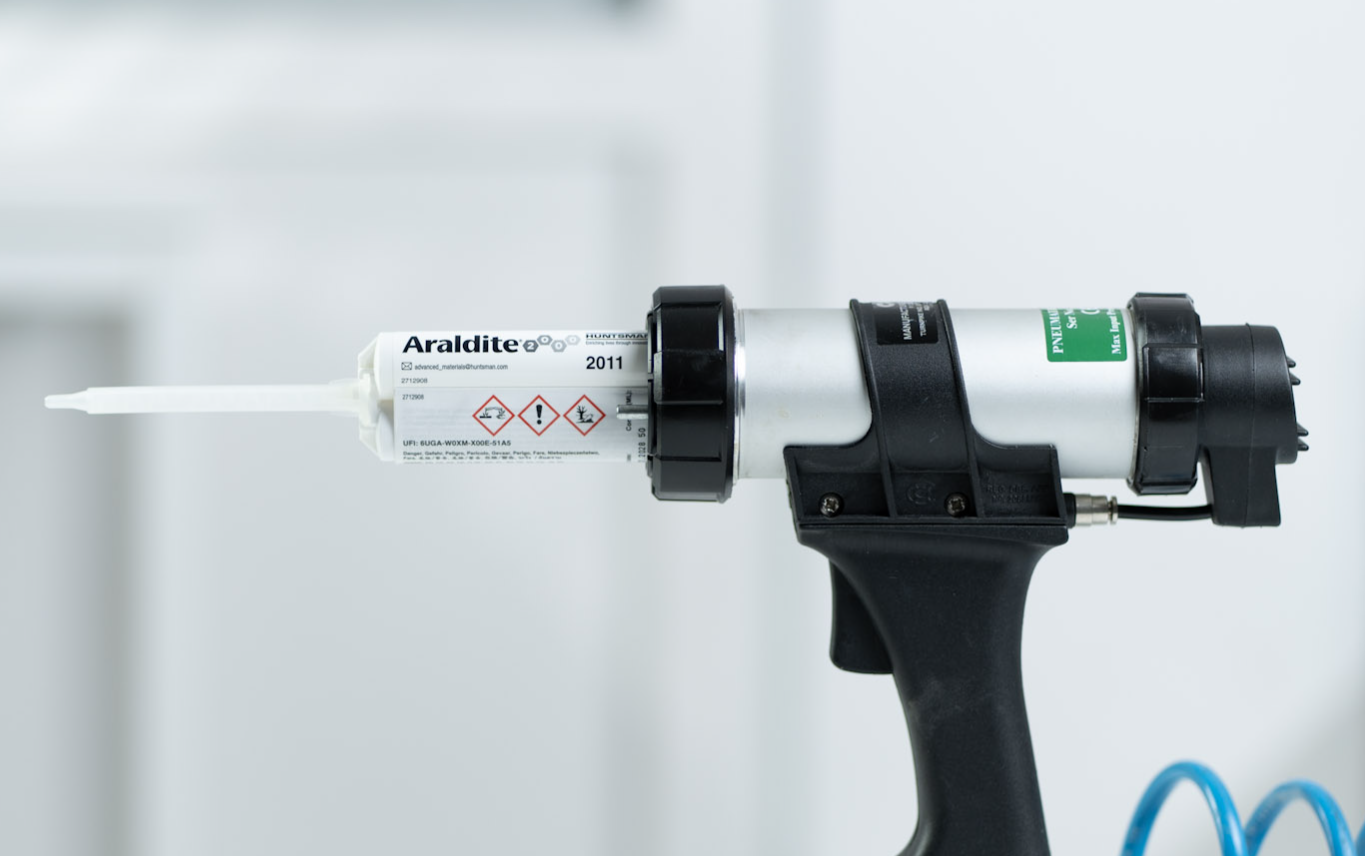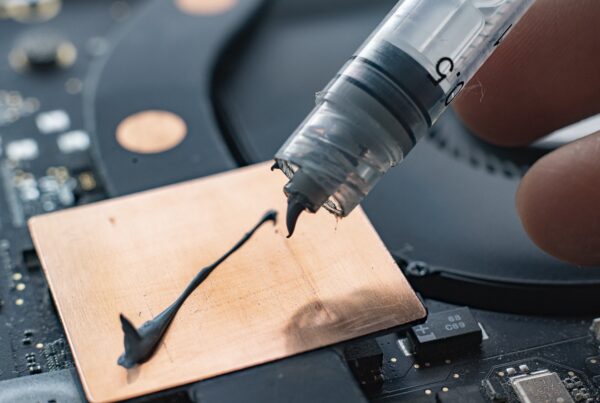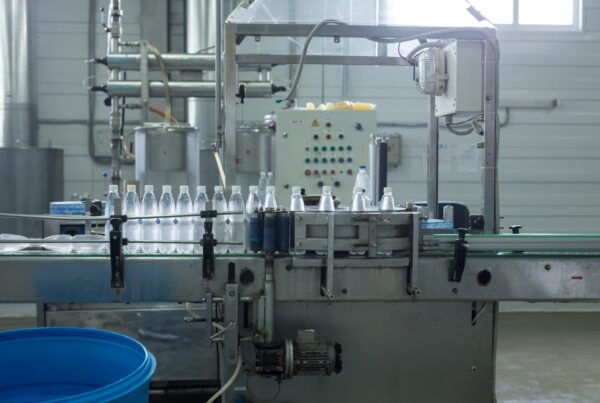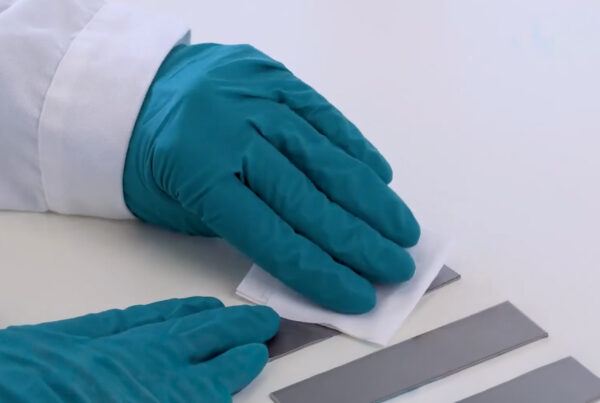Key Points
- The new generation of Araldite® epoxy adhesives was developed to respond to the CLP Regulation update, eliminating reclassified CMR substances and intentionally added BPA, while maintaining the reliability of existing products unchanged.
- The reformulations introduce an improved HSE profile, reducing exposure risks for operators and simplifying material management in production lines, without modifying processes and equipment.
- Equivalence reports show how the epoxy adhesives of the new generation offer performance comparable to previous versions, with controlled variations that do not affect established structural applications.
- Each updated product maintains rheological behavior, application logic, and compatibility with industrial processes, ensuring a gradual transition.
The epoxy adhesives Araldite® have represented, for over 80 years, a technical standard for structural bonding in major industrial sectors: transportation, energy, electronics e general industry.
With the update of the European CLP Regulation and the reclassification of some reactive diluents as CMR substances, Huntsman has initiated an important reformulation of the existing epoxy adhesive range.
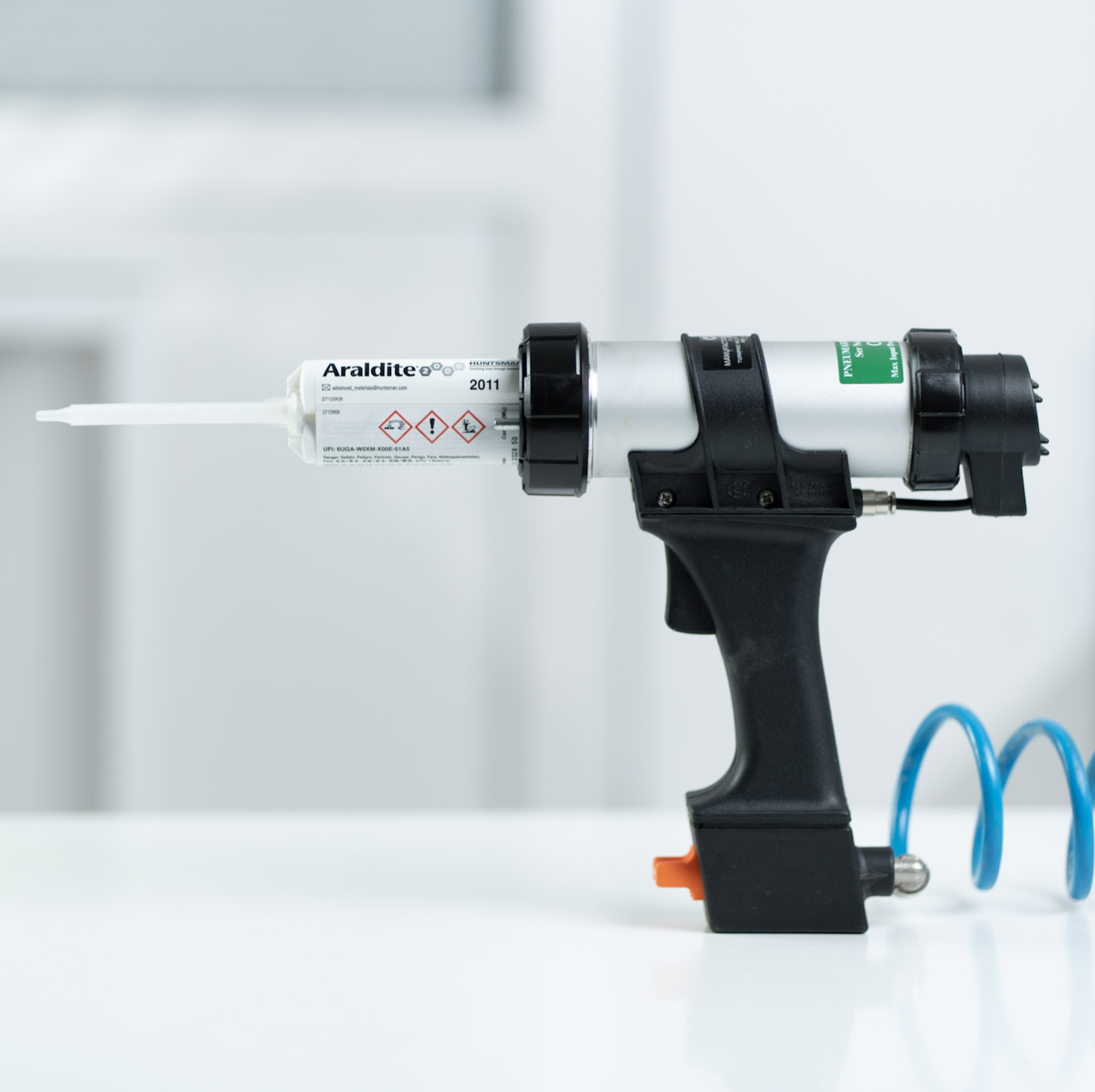
New Features of the New Generation of Araldite® Epoxy Adhesives
The result is a new generation of Araldite® adhesives, designed to:
- eliminate substances subject to CMR-labeling;
- not use intentionally added BPA;
- ensure an improved HSE profile;
- maintain functional equivalence with previous versions;
- preserve applications, performance, and compatibility with industrial processes.
This transition ensures operational continuity for companies, with a gradual transition to new formulations by 2026.
Better Regulatory Compliance (CLP, CMR, BPA-free)
The new versions of Araldite® epoxy adhesives eliminate substances classified as carcinogenic, mutagenic, or toxic to reproduction (CMR). They are also free of intentionally added BPA, a parameter increasingly relevant for various industrial supply chains.
The result is a new generation of Araldite® adhesives, designed to:
- eliminate substances subject to CMR-labeling;
- not use intentionally added BPA;
- ensure an improved HSE profile;
- maintain functional equivalence with previous versions;
- preserve applications, performance, and compatibility with industrial processes.
This transition ensures operational continuity for companies, with a gradual transition to new formulations by 2026.
Improved HSE Profile
The removal of reclassified substances reduces risks of exposure for operators, simplifies internal product management, and enables broader uses in regulated sectors.
Application Continuity
All epoxy adhesives of the new generation maintain the characteristics and properties of the previous range:
- the same application logic;
- the same mixing ratios;
- analogous rheological behavior;
- comparable thermal and mechanical stability;
- full compatibility with equipment and processes already in use.
Technical Equivalence
The comparison reports indicate performance in line with previous versions, with minimal differences and no impacts on final applications.
Environmentally Friendly Packaging
The new cartridges made from post-consumer recycled plastic (PCR) reduce environmental impact by up to 36% compared to previous versions.
Comparison of Epoxy Adhesives from both Generations
Below, an overview based exclusively on official Huntsman equivalence reports:
- Araldite® 2012 → Araldite® 2012-1
- Araldite® 2013-1 → Araldite® 2013-2
- Araldite® 2014-2 → Araldite® 2014-3
- Araldite® 2015-1 → Araldite® 2015-2
- Araldite® 2020 → Araldite® 2020-1
- Araldite® AV 138 M-1 → Araldite® AV 138 M-2
Comparison Araldite® 2012 → Araldite® 2012-1
The transition from Araldite® 2012 to Araldite® 2012-1 stems from the need to eliminate reclassified CMR substances and to update the formulation to the new HSE guidelines.
Araldite® 2012-1 preserves the identity of the historic product: a fluid, fast epoxy adhesive ideal for precision bonding, where reduced handling time is a central requirement.
In equivalence tests, the updated version of the epoxy adhesive showed comparable behavior in terms of workability, wettability, and application phase management.
The differences found between the two epoxy adhesives mainly concern greater climatic stability and slightly more ductile behavior, which does not modify the product’s intended use. Also the versatility in metal-rigid plastic-glass assembly remains totally unchanged.
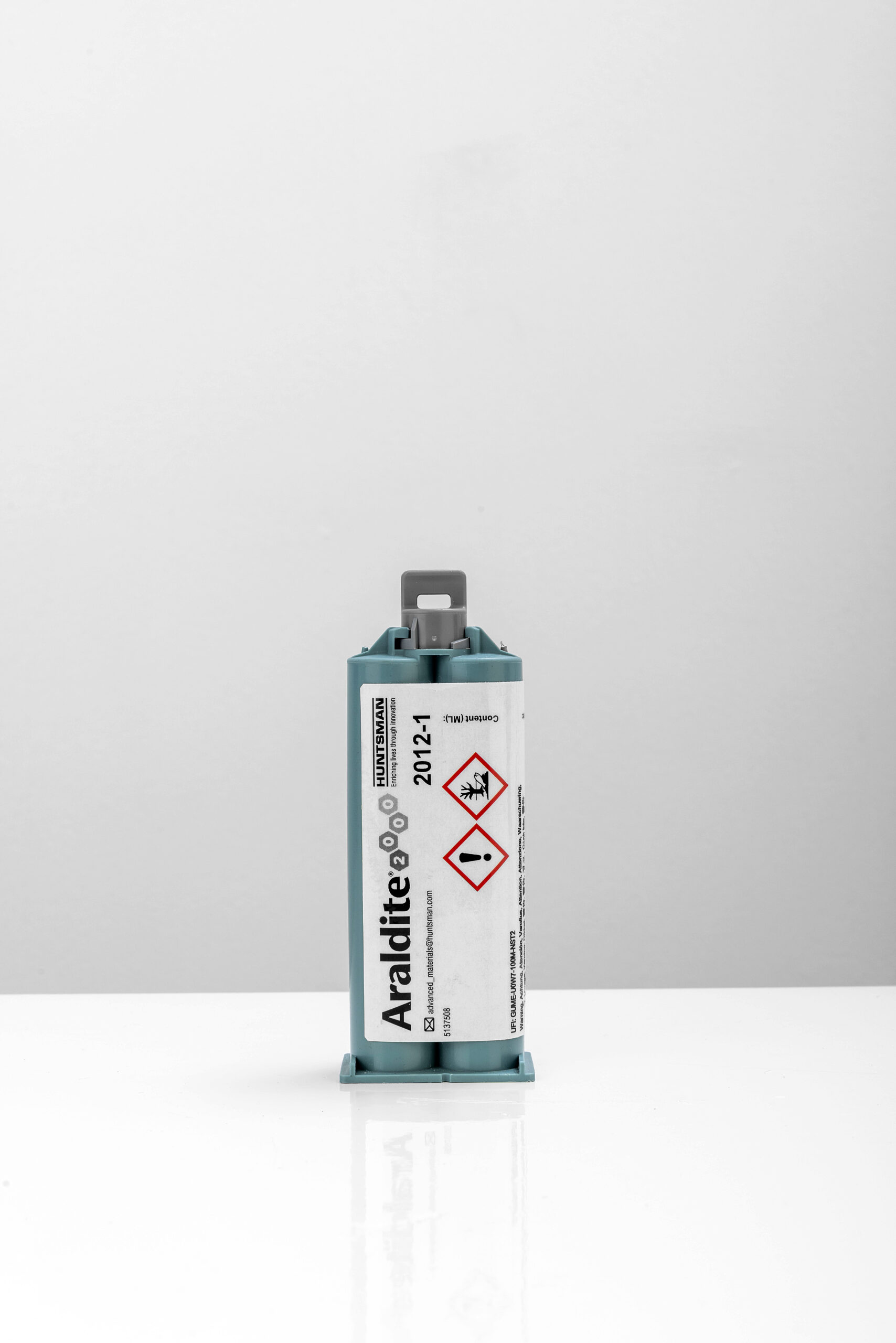

Comparison Araldite® 2013-1 → Araldite® 2013-2
The transition from Araldite® 2013-1 to Araldite® 2013-2 concerns one of the most used products for thixotropic bonding of metals and rigid materials. The reformulation has made it possible to completely eliminate substances subject to CMR-labeling, maintaining the original properties of the product: a structural adhesive with good balance between rigidity and resilience, particularly suitable for industrial and marine environments.
In equivalence tests, limited variations in mechanical behavior were observed. The application experience, however, remains substantially identical: same thixotropy, same thickness control, same stability after exposure to oils, humidity, and solvents.
This ensures that the epoxy adhesive Araldite® 2013-2 can be used in the same contexts as Araldite® 2013-1, guaranteeing continuity in structural applications where long-term durability is required.
Comparison Araldite® 2014-2 → Araldite® 2014-3
The Araldite® 2014-3 represents one of the most significant formulations of the new Araldite® generation. Designed to update the established Araldite® 2014-2, it maintains the application behavior that has made it a reference in bonding of metallic components and electronic exposed to heat, vibrations and chemically aggressive.
The new generation epoxy adhesive introduces a new resin base that eliminates reclassified CMR components and expands the product’s thermal stability.
Comparative tests performed between the two epoxy adhesives demonstrate better response of Araldite® 2014-3 to high temperatures and more stable performance in the presence of oils and solvents.
Despite these improvements, the application logic and user experience remain unchanged: same thixotropy, same gap control, same ability to form continuous joints even on vertical surfaces.
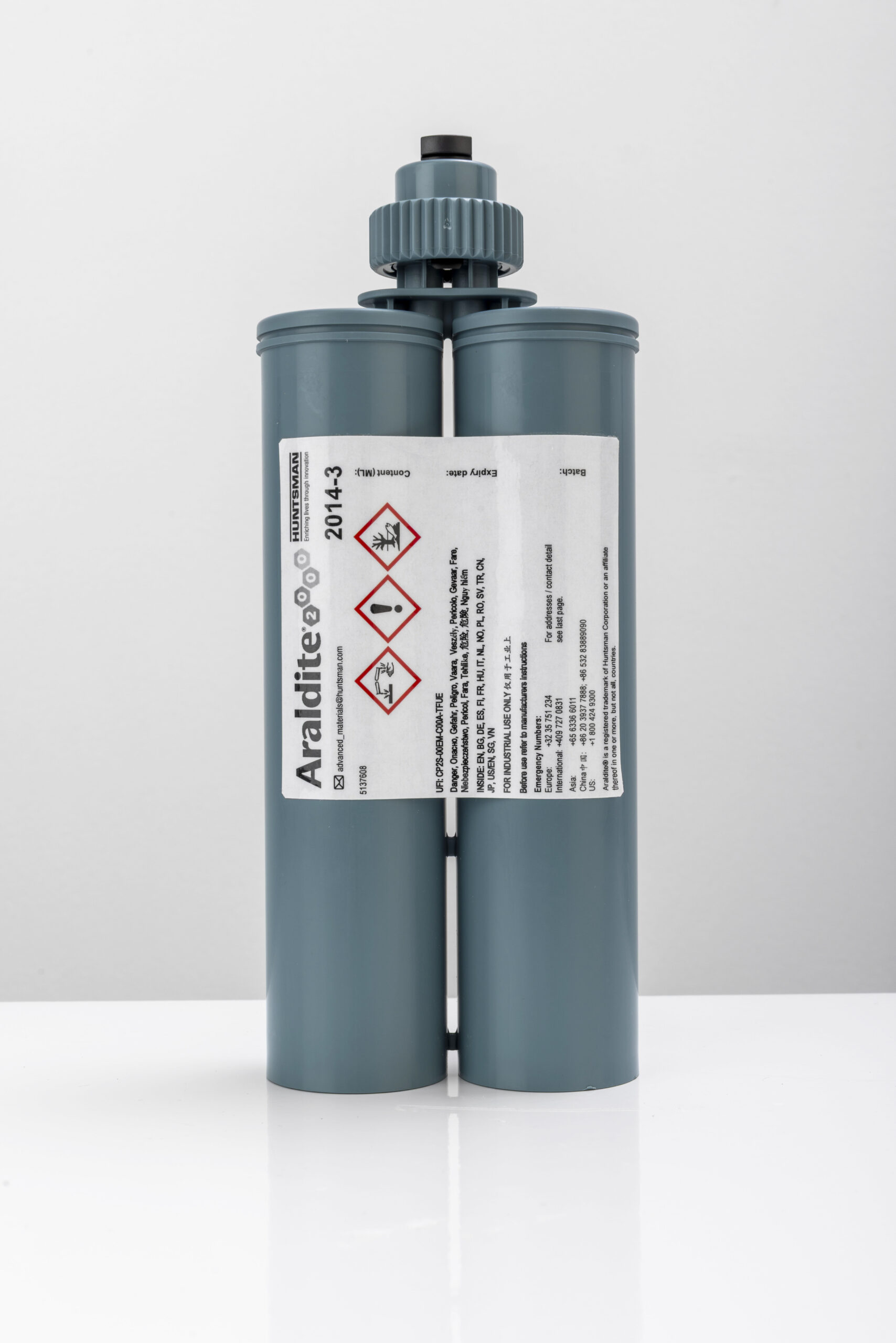

Comparison Araldite® 2015-1 → Araldite® 2015-2
Araldite® 2015-1 is one of the most used products in the sector of composites, thanks to its ability to combine toughness, resistance to vibrations e compatibility with materials such as GRP e SMC.
The epoxy adhesive Araldite® 2015-2 maintains these fundamental characteristics intact, while introducing an updated resin formulation compliant with new generation requirements.
Equivalence tests show slightly more rigid behavior and lower elongation compared to Araldite® 2015-1, characteristics that do not alter the product’s intended use. The thixotropy remains identical, as does the ability to manage bonding on high thicknesses.
Applications in the marine sector and transportation continue to find in Araldite® 2015-2 a suitable product, with robust mechanical performance and good resistance in environments subject to vibrations.
Comparison Araldite® 2020 → Araldite® 2020-1
The formulation of Araldite® 2020-1 concerns a particularly sensitive product: the transparent adhesive for aesthetic applications, encapsulation and glass-metal assemblies. In this case, the preservation of transparency and low viscosity was a priority, and tests confirm that these characteristics have remained unchanged.
The main advantages concern an increase in viscosity and greater toughness, which improve the product’s behavior without modifying its identity. The ability to cavity penetration and optical transparency remain key characteristics of Araldite® 2020-1, which can be used in the same contexts as the previous version while ensuring a superior HSE profile.


Comparison Araldite® AV 138 M-1 → AV 138 M-2
The Araldite® AV 138 M-2 is designed for bonding in critical environments with high thermal and chemical requirements. The new formulation eliminates substances classified as CMR, while maintaining the product’s main functions: high thermal resistance, stability in the presence of fuels and solvents, and consistent thixotropic behavior.
In equivalence testing, Araldite® AV 138 M-2 shows controlled variations in mechanical behavior, particularly in elastic modulus, without altering its intended application.
Performance remains consistent with the previous version, ensuring continuity in the most demanding applications.
Conclusions
The new generation of Araldite® epoxy adhesives represents an essential update in terms of regulatory compliance, operator safety, and environmental care, while maintaining continuity in performance and applications.
Official reports confirm that each reformulated product offers technical equivalence compared to the previous version, with controlled variations that do not impact established industrial processes.
For a specific evaluation of the transition from old to new generation in your application, contact Mascherpa experts: our technical team is available to support the selection of the most suitable product and all transition phases.

